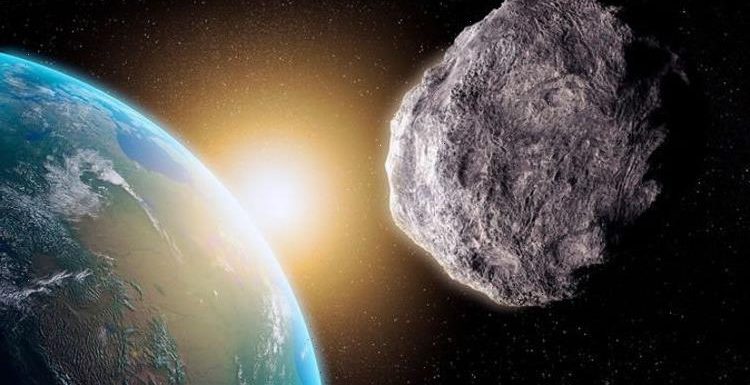
NASA testing planetary defence spacecraft to divert asteroid's path
We use your sign-up to provide content in ways you’ve consented to and to improve our understanding of you. This may include adverts from us and 3rd parties based on our understanding. You can unsubscribe at any time. More info
Cataclysmic asteroid impacts have happened in the past and chances are they will happen again in the unforseeable future. When a six-mile-wide (10km) space rock struck the planet just off the coast of Mexico’s Yucatan peninsula some 66 million years ago, the resulting chain reaction brought about the demise of dinosaurs. More recently, in 2013, a 65.5ft-wide (20m) rock entered the atmosphere above Russia’s Chelyabinsk oblast and exploded before it could hit the ground.
The eruption created a devastating airblast that blew out windows in a wide radius, damaged buildings and injured more than 1,500 people with shards of glass.
Five years on from the incident, NASA Planetary Defense Officer Lindley Johnson called the Chelyabinsk Meteor a “cosmic wake-up call” to the dangers lurking in the depths of space.
It is not surprising, therefore, to see the US space agency ramp up its efforts to shore up its planetary defence measures.
Late last month, NASA launched the Double Asteroid Redirection Test, or DART, which has been touted as a last-ditch effort to prove the planet is not entirely defenceless from cosmic impacts.
As scientists have pointed out, attempts to blow up an asteroid barreling towards the planet could have devastating consequences.


Instead, NASA has proposed using a so-called kinetic impactor, which can use minimal effort to alter an asteroid’s orbital trajectory.
DART is pencilled in to rendezvous with a pair of near-Earth asteroids called Didymos (65803) late next year, catching up with the space rocks some 6.8 million miles (11 million kilometres) from the planet.
The asteroids are estimated to measure about 2,560ft (780m) and 524ft (160m) across.
DART will target the smaller of the two space rocks, Dimorphos, ramming it at speeds of 6.6 km per second.
This should change the asteroid’s orbit by a fraction of a percent, which will be enough for NASA astronomers to track from Earth.
Asteroid Bennu: NASA sheds light on near-earth object
According to Lord Martin Reese, Astronomer Royal, this will depend somewhat on the asteroid’s surface and how much debris is blown off by the impact.
But even a minute change, over long distances, can be enough to steer a rogue asteroid clear of the planet.
Lord Rees told Express.co.uk: “If we know the orbits well enough to have several years of advance warning, only a small ‘nudge’ is needed to deflect them.”
The Didymos asteroids do not pose any direct threat to the planet themselves.
But they represent a class of asteroids that orbit the Sun within a “near” distance to the planet and that gives astronomers ample reason to want to keep a watchful eye on the skies.
Lord Rees said: “Astronomers have identified most of the large asteroids that could cause global disasters.


“But it’s worthwhile to chart the orbits of all Earth-crossing asteroids more than 50m across, which could destroy a city.”
The infamous Tunguska disaster of 1908, for example, is believed to have been caused by a slightly smaller asteroid striking the Russian taiga.
The incident levelled hundreds of square miles of Siberian forest and was for many years a source of intense debate among scientists.
Today, asteroids are considered to be “potentially hazardous” to Earth if they measure about 500ft (150m) or more and approach Earth’s orbit within 4.6 million miles (7.5 million kilometres).
For comparison, when Mars and Earth are at their closest, they are about 33 million miles (53 million miles) apart.
NASA said: “Potentially hazardous comets also get unusually close to Earth.”
And yet, there are much more pressing matters here on Earth that scientists are desperately trying to fix.
Namely, the effects of climate change and global warming are of the utmost priority on the planet-saving agenda.
Lord Rees said: “The threat from asteroid impacts is, of course, real, and I think what NASA is doing worthwhile and proportionate.
“But the probability of impact is small and should worry us far less than the growing threats that we humans ourselves are causing.”
Source: Read Full Article